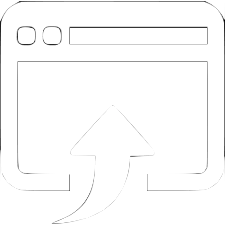 YOUTUBE VIDEO:
https://www.youtube.com/watch?v=dKm_rpsLByU
YOUTUBE VIDEO:
https://www.youtube.com/watch?v=dKm_rpsLByU
 Bank Vocabulary ESL Lesson Plan Description
Bank Vocabulary ESL Lesson Plan Description
OVERVIEW & OBJECTIVES
This bank vocabulary ESL lesson plan offers engaging activities, PDF worksheets, and digital materials designed for pre-intermediate A2–B1 students. In this lesson, students will:
- Compare traditional and online banks through image-based discussion and practice using basic bank vocabulary.
- Learn useful banking-related verbs and apply them in personalized speaking activities.
- Watch a short video explaining five major benefits of online banking and complete vocabulary and comprehension tasks.
- Practice using essential banking terms like "account," "ATM," and "mortgage" in dialogues and Q&A activities.
- Role-play a customer and banker interaction to personalize language use and reinforce speaking fluency.
PREVIEW & DISCUSSION
Students begin this bank vocabulary ESL lesson plan by analyzing two images of different banks—one showing a traditional bank and the other an online banking situation. They match six benefits to Bank A, B, or both and explain their reasoning. Then, they discuss their own banking habits and preferences, such as whether they visit a bank in person or use online banking and what services they typically use. If students don't use a bank, they talk about how they manage their money and whether they'd like to open an account. Next, they complete four short personal statements using the verbs "check," "register," "lose," and "log" to express how people use banking services. Finally, they answer a general question about opening a bank account in their own country and what is usually required, setting the stage for the video and upcoming vocabulary work.
VIEWING ACTIVITY
In the video, students learn five key reasons why online banking is popular: it offers convenience, fast service, visibility of spending, control over finances, and strong security. The first activity asks students to watch the beginning of the video and write down two to three benefits they notice. Then, they complete a matching task where they connect six banking-related actions or phrases—such as “check your statements” or “log in”—to descriptions that explain how they support the five benefits discussed in the video. This part of the bank vocabulary ESL lesson plan helps students better understand not just the vocabulary but also how online banking works in real-life situations.
DISCUSSION & BANK VOCABULARY
Students reflect on the video by discussing which benefit of online banking they believe is most important and whether they think traditional banks will still exist in the future. They then complete a dialogue between two friends, using new vocabulary such as "debit card," "mortgage," "fees," and "statements." This helps reinforce useful terms introduced in the video. After that, students match six banking-related questions with their appropriate endings, such as “How often do you…check your balances and statements?” They ask some of these questions to a classmate or their teacher to personalize the vocabulary and practice real-life communication about banking services.
CUSTOMER & BANKER: Q&A MEETING
In the final section of this bank vocabulary ESL lesson plan, students create their own bank profiles, choosing account types, service options, fees, and welcome gifts. Using this information, they do a role-play in pairs—one student takes the role of a banker and the other is a customer asking questions and deciding whether to open an account. After completing the first round, they switch roles and repeat the task. Alternatively, students can discuss more personal banking questions with a partner or teacher, such as when they use cash or debit cards, what services matter most, and problems people may face with banking apps. These communicative activities help students apply the vocabulary in realistic and engaging ways.
BENEFITS OF USING THIS BANK VOCABULARY ESL LESSON PLAN
This bank vocabulary ESL lesson plan helps students build real-world language skills while discussing an important and practical topic. Teachers can guide students through clear, structured tasks that develop speaking fluency, vocabulary range, and listening comprehension. The lesson includes a mix of group discussion, video work, grammar practice, and interactive speaking. The dialogue and role-play sections give students realistic ways to use banking vocabulary in context. Teachers also get flexibility to adapt activities for one-on-one lessons or larger classes. Overall, this lesson delivers practical value, strong student engagement, and a smooth flow from guided to freer practice.
 Video Description
Video Description
 Lesson Activities
Lesson Activities
Banking, Banks, Finance, Technology, Services
Note-taking, Matching
Financial Terms, Accounts, Transactions, Banking Services, Payments
At The Bank Role-Play, Qiuz & Review, Lesson Reflection
 Lesson Topics
Lesson Topics
Banking, Banks, Finance, Technology, Services


 Like us on facebook
Like us on facebook
